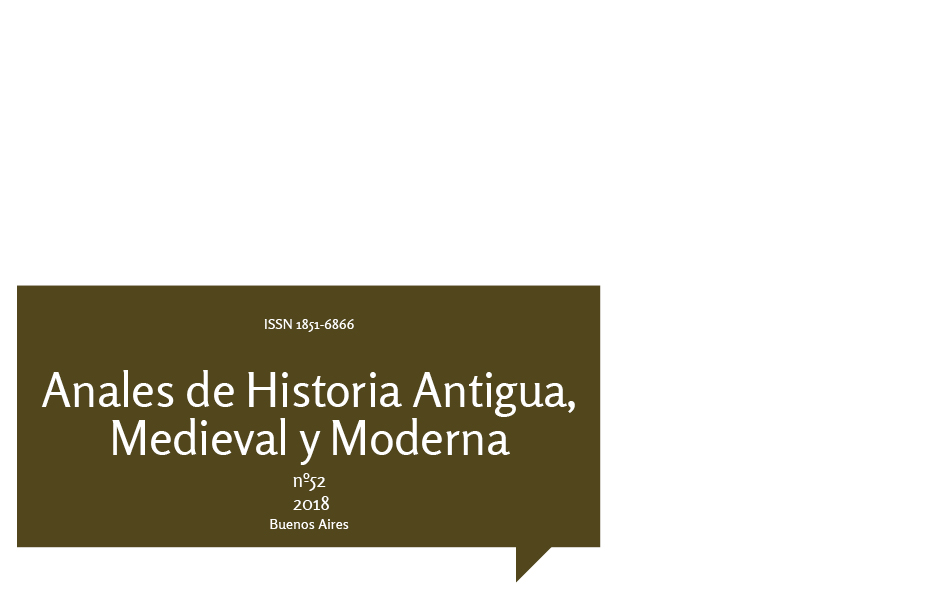Episcopal Power, Clergy and Diocesan Patrimony in the Visigothic Realm (589- 711)
Keywords:
Visigothic Kingdom, bishops, ecclesiastic patrimony
Abstract
The Visigothic synods have a two-faced character: whether, on the one side, they are a major agency of Episcopal power since they transmit the rules of an ordered situation headed by the bishop; on the other they are the main instrument of negotiation within the clergy, in view of the fact that they mediate conflicts that eventually could put a strain on the Episcopal power. Managing the ecclesiastic patrimony, priestly ordenations and his own patrimony, the bishop proceeds with the clergy primarily as a dominus, making use of the law only under situations of conflict. In a juncture marked by fierce competition, the bishop only imposes hegemony inasmuch as he can strategically manage the instruments he has at his disposal.Downloads
Download data is not yet available.
Published
2018-11-01
How to Cite
Dell’Elicine, E. (2018). Episcopal Power, Clergy and Diocesan Patrimony in the Visigothic Realm (589- 711). Anales De Historia Antigua, Medieval Y Moderna, 52, 35-44. https://doi.org/10.34096/ahamm.v52.6421
Issue
Section
Dossier. Obispos y obispados en la Antigüedad Tardía y Edad Media.








